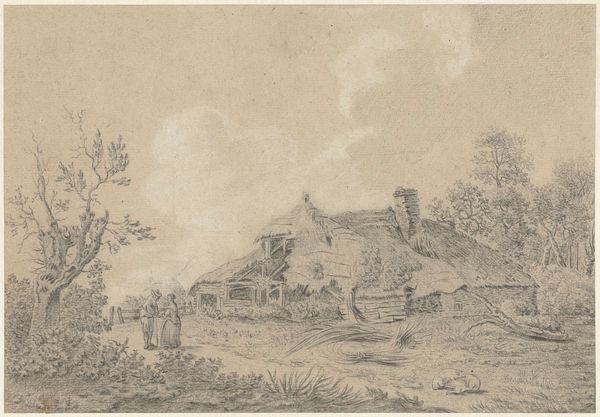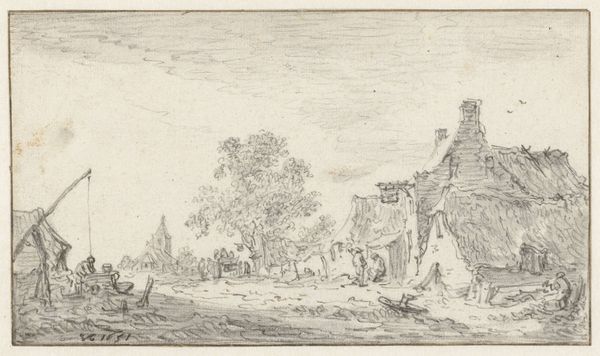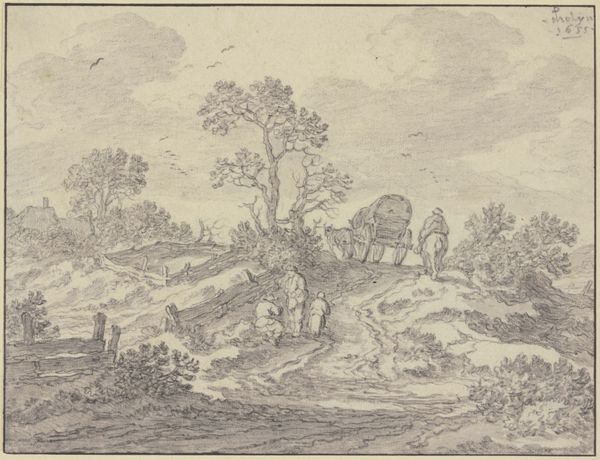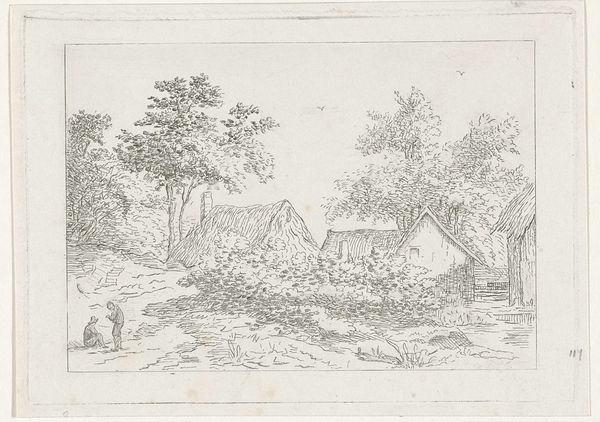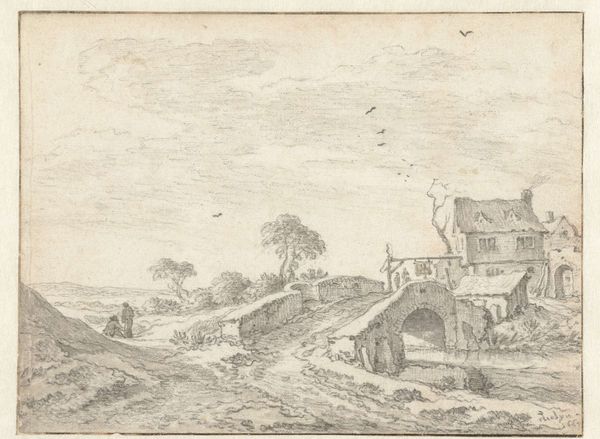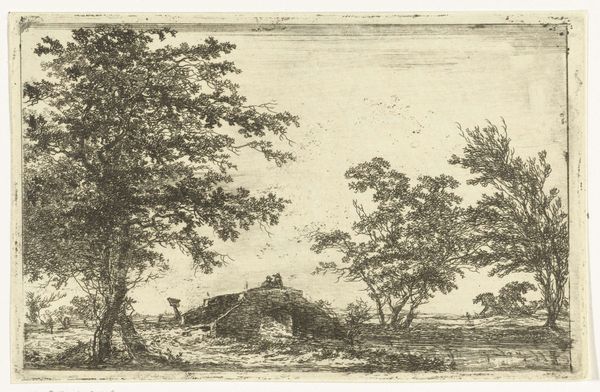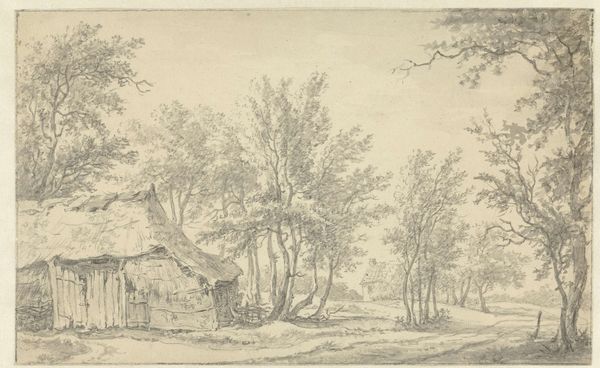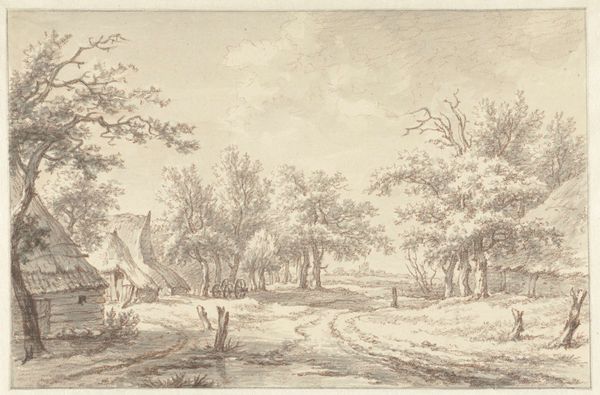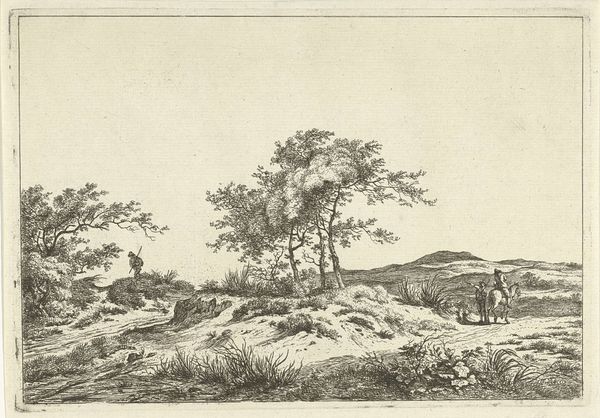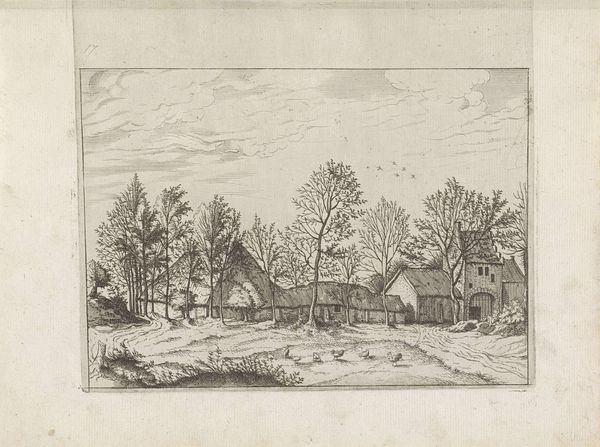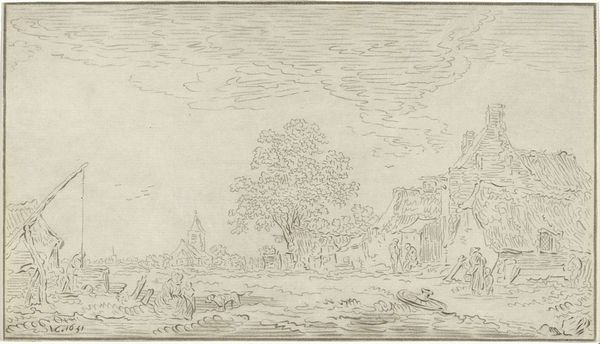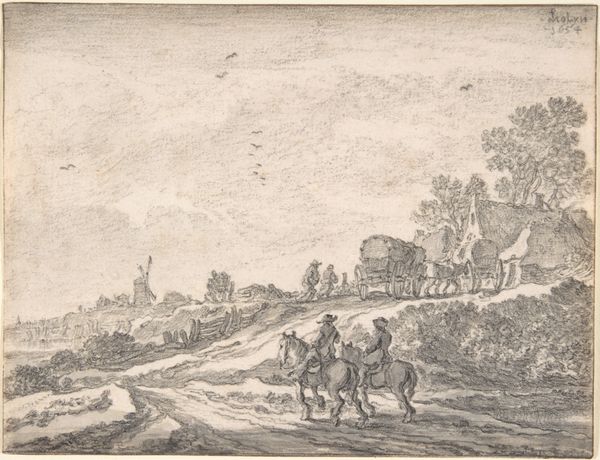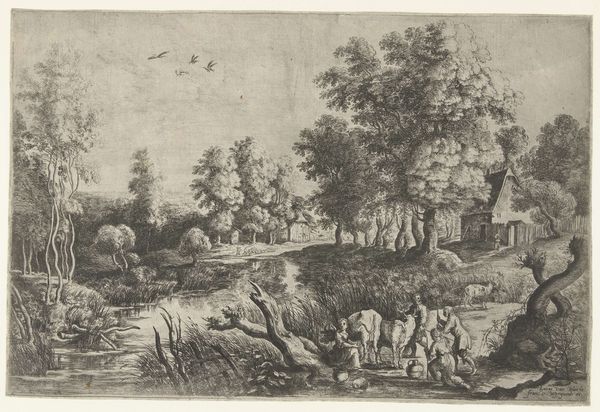
drawing, pencil, graphite
#
drawing
#
dutch-golden-age
#
pen sketch
#
pencil sketch
#
landscape
#
pencil
#
graphite
#
realism
Dimensions: height 151 mm, width 200 mm
Copyright: Rijks Museum: Open Domain
Curator: Pieter de Molijn's drawing, "Hutten langs een weg," created sometime between 1650 and 1660, presents us with a rather bleak roadside scene. It's done in graphite, pen and pencil and is now housed in the Rijksmuseum. What are your initial impressions? Editor: It strikes me as incredibly vulnerable. The thin, almost skeletal lines used to render these dwellings and figures convey a sense of precarity and fragility. It is definitely in a realistic style, nothing idealized. Curator: Precisely. The seeming realism connects deeply to the prevailing economic conditions of the mid-17th century in the Netherlands. While the Golden Age suggests prosperity, this work hints at the lives of those who existed on the margins. These dwellings aren't grand estates, but modest structures born out of readily available materials. Notice how the artist renders the thatching. Editor: The thatching particularly grabs my eye, with its somewhat disheveled appearance, almost as though the cottages have shrugged and are hunched under the weather itself. It is reminiscent of "vanitas" painting. Does this evoke religious associations or a particular community? Curator: I am curious as to whether those individuals grouped at the edge of the road share common occupations. There appears to be much work along the pathway with those in the foreground almost observing this. The means of living were varied and dependent on location; for rural people, land, livestock, cottage industry may have been important in order to obtain trade or sell commodities at nearby markets. This imagery might have represented values that spoke directly to merchant collectors or emerging patrons. Editor: Yes, these humble people might symbolize fortitude through simplicity but one could suggest those dwellings have strong links to ancient mythology, evoking the lives of itinerant wanderers with no fixed homes or possessions. The distant church might signify something else though... stability, civilization and a permanent home that the cottages could not offer? The cluster of birds taking flight adds a fleeting emotional quality to the sketch; they become representations of mortality, perhaps? Curator: Those bird formations lend something ethereal against an otherwise grounded image of laborers and basic shelter; one must wonder who the piece would be purchased by at the time. Editor: Ultimately, Pieter de Molijn's composition holds potent symbolism which allows a quiet story about impermanence to unfold. Curator: Absolutely, and his ability to accomplish this narrative through common materials highlights a sophisticated exchange between craft, art, and societal commentary.
Comments
No comments
Be the first to comment and join the conversation on the ultimate creative platform.
